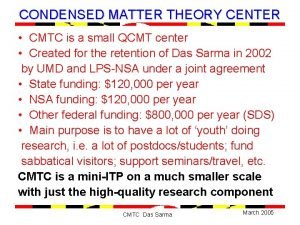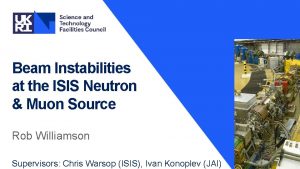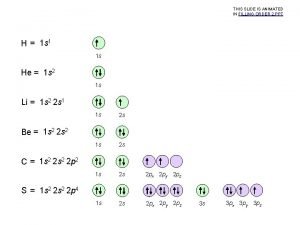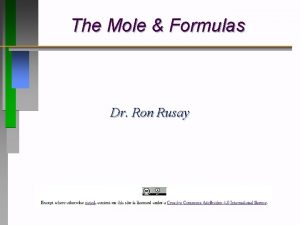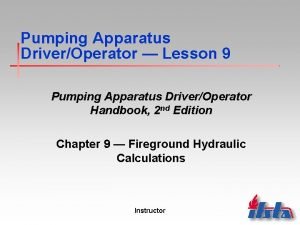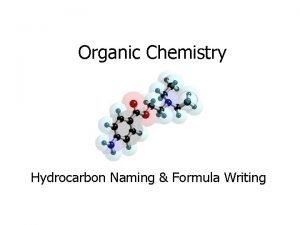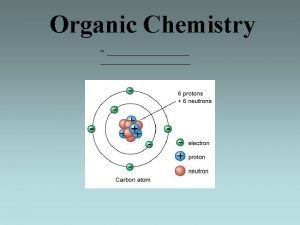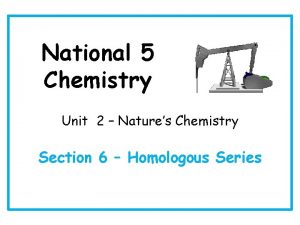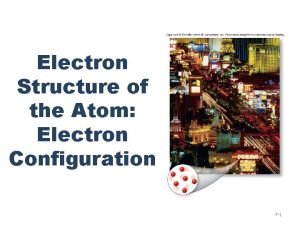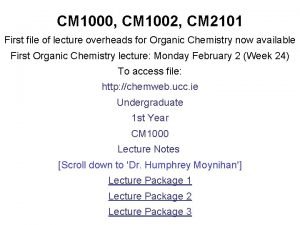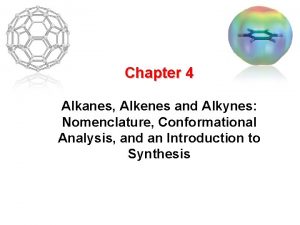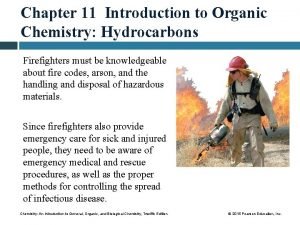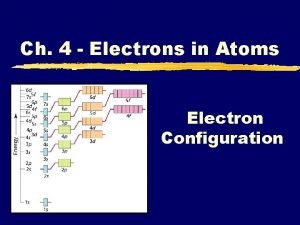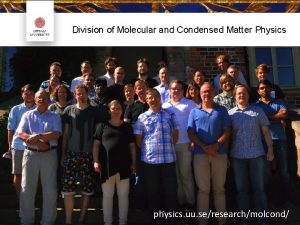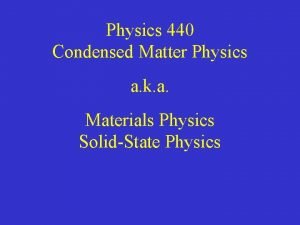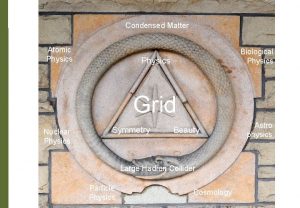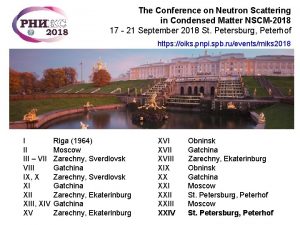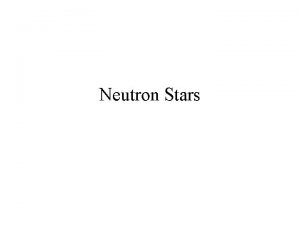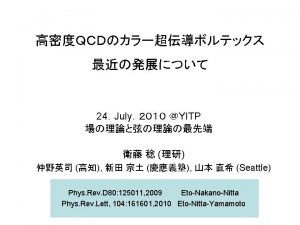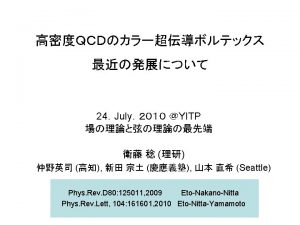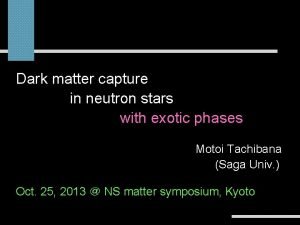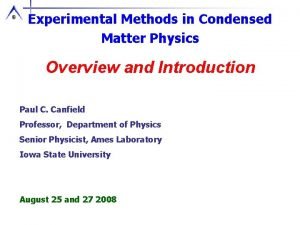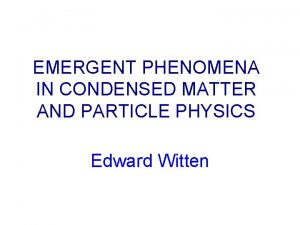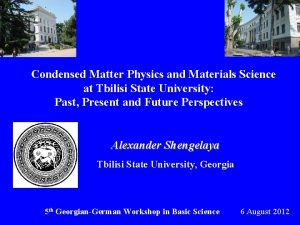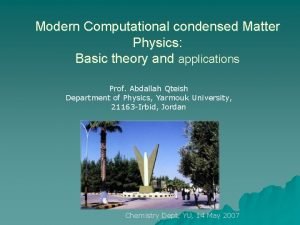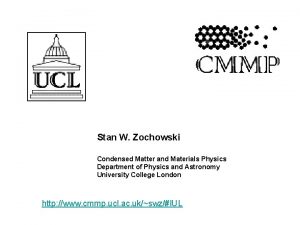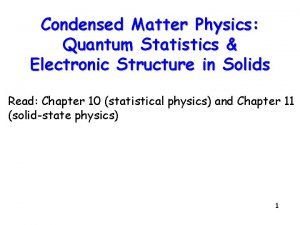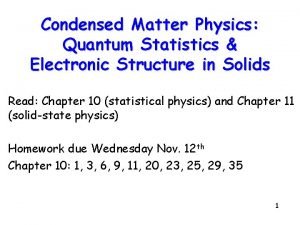WSG5 on Condensed matter and neutron physics for





















- Slides: 21

WSG-5 on Condensed matter and neutron physics for the Strategic Long-Term Plan of JINR DNS-IV: a New Advanced Neutron Source at JINR Alexander Ioffe (chairman of the WSG-5) Jülich Center for Neutron Science at Heinz Maier-Leibnitz Zentrum (Munich, Germany) and Frank Laboratory of Neutron Physics (JINR, Dubna) JINR Scientific Council Dubna 19. 09. 2019

Contribution on behalf of WSG-5 on condensed matter and neutron physics: A. Ioffe (Germany) – Jülich Center for Neutron Science at Heinz Maier-Leibnitz Zentrum, München Frank Laboratory of Neutron Physics JINR, Dubna (Chairman) V. L. Aksenov (Russia) – National Research Center “Kurchatov Institute”, Moscow; Frank Laboratory of Neutron Physics JINR, Dubna J. Carpenter (USA) – Argonne National Laboratory, Chicago A. Harrison (UK) – Diamond Light Source, Didcot, Member of JINR Scientific Council N. Kucerka (Slovakia) – Frank Laboratory of Neutron Physics JINR, Dubna T. V. Kulevoy (Russia) – National Research Center “Kurchatov Institute” – ITEP, Moscow A. V. Lopatkin (Russia) – N. A. Dollezhal Research and Development Institute of Power Engineering F. Mezei (Sweden) – European Spallation Source, Lund P. Mikula (Czech. Rep. ) – Nuclear Physics Institute – Řež, Member of the JINR PAC on Condensed D. Nagy (Hungary) – Wigner Research Centre for Physics, Budapest (Chairman of JINR PAC on C V. Nesvizhevsky (France) – Institute Laue-Langevin, Grenoble, Member of JINR PAC on Nuclear P L. Rosta (Hungary) – Budapest Neutron Center, Budapest S. F. Sidorkin (Russia) – Institute for Nuclear Research of Russian Academy of Sciences, Troitsk M I. T. Tretyakov (Russia) – N. A. Dollezhal Research and Development Institute of Power Engineering D. Chudoba (Poland) – Frank Laboratory of Neutron Physics JINR, Dubna (scientific secretary)

Meetings and workshop • Regular semiannual meetings of the WSG-5: June 15, 2018; January 23, 2019; June 18, 2019 • International Workshop (December 6 -7, 2018): - 46 participants from Sweden, France, Germany, Hungary, Slovakia, Poland Russia - leading European and Russian neutron centers were represented.

A New Advanced Neutron Source at JINR: Dubna Neutron Source (DNS-IV) q A long-term strategy aiming: § to construct a world leading neutron source DNS-IV at JINR § to open unprecedented possibilities for scientists from JINR member states and worldwide for research in condensed matter physics, fundamental physics, chemistry, material and life science. q Project is extended over two strategic planning periods, till 2036. q Estimated construction costs (incl. instrumentation) - about 500 M€

Neutron Science – critical applications in: • Condensed matter physics (new materials, material design) • Information technologies (spintronics) • Fundamental physics • Life science: Biophysics, Pharmacology and Medicine – drug design and delivery • Engineering

Neutrons vs. X-rays Ø Neutron scattering - no systematic A(Z) dependence => light elements are not masked by heavy ones H+ is not visible for X-rays at the background of heavier atoms, but very well visible for neutrons! X-ray and neutron scattering power X-rays: scattering Z Neutrons: irregular scattering • Neutron scattering clearly distinguish between neighboring atoms (for biology, particularly N, C and O) • Refining structure of proteins => drug design Ø Neutron energies: k. Troom≈ 0. 01 e. V (cf. 10 -100 ke. V for X-rays) => non-disturbing and non-destructive probe; => much more sensitive to weak and slow atomic motions. Ø Neutrons: isotopic contrast! H/D difference – invaluable for biology

Fundamental physics at DNS-IV • Very cold neutrons (VCN) - wavelengths 20Å to 100Å: o fundamental physics (search for neutron-antineutron oscillations ; neutron lifetime measurements, search for extra-short-range interactions at neutron scattering, experiments with neutrons in a whispering gallery); o developing new techniques for condense/soft matter physics (high -resolution neutron spin-echo technique, reflectometry, highresolution inelastic scattering, small angle scattering) • Ultra cold neutrons (UCN) - wavelengths > 600Å o traditional research with UCN (neutron lifetime measurement, neutron EDM search, precise measuring quantum states in gravitational field as tool for search new types of interaction, etc. ) ; o new techniques for condense/soft matter and surface physics (high-resolution neutron microscopy, reflectometry);

European neutron landscape 2036 2016 ЕSS PIK DUBNA ISIS DUBNA FRM 2 ILL Ø Inevitable shortage of neutron access Ø Clear need in a new neutron source

World neutron landscape 2036 2019 ЕSS PIK DUBNA ISIS DUBNA FRM 2 ILL DNS-IV

New Dubna neutron source DNS-IV - not just another neutron source, but one of the best in the world! Pulsed neutron source: peak neutron flux instead of mean neutron flux. Flux significant gain in the instrument performance Φpeak All neutron sources built during last two decades are pulsed sources (ISIS-2 (UK), J-PARC (Japan), SNS (USA). European Spallation Source (ESS) – the most advanced Φmean neutron source (to be operational in 2024) Neutron pulses at different. IBR-2 M facilities λ=1. 5Å τ Reactor source T IBR-2 M ESS Pulsed source • Instruments at ESS will outperform similar instruments at ILL by 20 -100 times! • New Dubna source will be benchmarked against the ESS. Mean flux of ILL t

New Dubna Neutron Source: DNS-IV - not just another neutron source, but one of the best in the world! • • Long pulse neutron source, however shorter pulse than at ESS (0. 3 ms vs. 3 ms) 10 times higher magnitude Pulse shaping ESS long pulse is good for low resolution experiments High resolution requires pulse shaping => intensity losses DNS-IV: Φpeak~1016 x 10 λ=1. 5Å IBR-2 M New Dubna source will provide shorter neutron pulses, however containing the same number of neutrons as at ESS. => it will be as good as ESS for low resolution experiments and better for high resolution experiments. Mean flux of ILL

DNS-IV: two alternative concepts 1. Pulsed reactor IBR-3 Reactivity modulator 2. Accelerator-driven neutron source: spallation + multiplier Core +reflector E. Shabalin et al. Core +reflector Proton beam A. Vinogradov et al. Reactivity modulator 14

DNS-IV: two alternative concepts 1. Pulsed reactor IBR-3 E. Shabalin et al. Reactivity modulator Ti. H 2 From IBR-2 to IBR-3 DNS-IV > 2036 1 - Np-237 reactor core, 2 - empty sector of reactivity modulator, 3 - reactivity modulator coated with Ti. H 2 , 4 - moderator, 5 – Be reflector. Spherical core to reduce the amount of Np-237. • thermal power of 10 -12 MW • modified moderator placement geometry => neutron flux density 1014 n/cm 2/s 15

DNS-IV: two alternative concepts 2. Accelerator-driven neutron source: spallation + multiplier • Pu. O 2 core operating in the deep under-critical mode • neutron multiplication factor of about 20 -50 W target Core + reflector Proton beam Pu. O 2 A. Vinogradov et al. the same neutron flux as at ESS can be achieved by a 1. 2 Ge. V proton accelerator with the (20 -50) times less beam power (0. 1 MW vs. 5 MW@ESS). technical problems to be solved - the influence of instability of the accelerator’s operation on the stability of the operation of the booster. 16

• • • Both options are under the feasibility study in N. A. Dollezhal Research and Development Institute of Power Engineering (NIKIET), Moscow A positive feedback was already obtained for the IBR-3 project Roadmap for design and construction of DNS-IV: ©NIKIET

• • • Both options are under the feasibility study in N. A. Dollezhal Research and Development Institute of Power Engineering (NIKIET), Moscow A positive feedback was already obtained for the IBR-3 project Roadmap for design and construction of DNS-IV: ©NIKIET

Highly efficient neutron source: maximal use of the emitted neutrons and neutrons delivered to instruments Moderator (spectra transformer) Delivery system (neutron guide) Sample Neutron Source φemitted φdelivered Expected gain vs. IBR-2: Flux 10 Moderators 2 -3 Delivery system 5 -7 Instruments 3 -5 Total 300 -1000 Neutron source will be built in combination with proper moderators, neutron delivery system and instruments.

Plans for 2023 -2030 1. Development of the final concept of modern thermal and cold moderators o Grooved moderators (high intensity) 30 K (4 instr. ) o Low-dimensional moderators (high brilliance) 32 beamports separated by 10° CM 2 Core 30 K (6 instr. ) CM 1 30 K (2 instr. ) 30 K (4 instr. ) 3 CM - 80 K CM- (6 instr. ) 4 300 / 80 K (2 instr. ) o Converters for very cold neutrons (VCN/UCN factory) • time focusing of UCN at pulsed neutron beam. • construction of the VCN source prototype with directed extraction of neutron beam. • optimization of various moderators and UCN extraction systems for DNS-IV

Plans for 2023 -2030 2. Design of modern neutron instruments • Monte-Carlo simulations and optimization of neutron delivery system – maximal use of the emitted neutrons. • Monte-Carlo simulations and optimization of neutron scattering instruments – maximal use of the delivered neutrons. • Development of dedicated Monte-Carlo simulation procedures 3. Design of the high-efficient neutron delivery system • Ballistic, elliptic and parabolic neutron guides 4. IBR-2 Instrumentation Development • Construction, installation and commissioning of two inelastic neutron scattering spectrometers in inverted and direct geometry at the beamline #2; • Upgrade of the all IBR-2 instruments; • Design of the instruments for DNS-IV, testing the key technologies prototypes at the IBR-2;

Conclusions • Systematic shortage of the neutron beamtime in Europe and worldwide raises demand in construction the new neutron sources; • We propose the new advanced neutron source at JINR (DNS-IV) (the combination with modern moderators, neutron guides and instruments ), which promises to be one of the best in the world; • DNS-IV will open unprecedented possibilities for scientists from JINR member states and worldwide for research in condensed matter physics, fundamental physics, chemistry, material and life science; • FLNP possesses the high-level competence in construction and operation of pulsed neutron sources, cold and ultra-cold neutron sources and neutron instrumentation; • FLNP is also staffed by a large number of motivated young scientists and engineers eager to work on this new exciting project; • The planned start of the DNS-IV operation is 2036 -2037;

Thank you for your attention!
 Umd cmtc
Umd cmtc Grey matter of nervous system
Grey matter of nervous system Cerebral aqueduct
Cerebral aqueduct Gray matter and white matter
Gray matter and white matter Gray matter
Gray matter Section 1 composition of matter
Section 1 composition of matter Composition of matter section 1
Composition of matter section 1 Chapter 2 section 1 classifying matter answer key
Chapter 2 section 1 classifying matter answer key Composition of matter section 1
Composition of matter section 1 Energy naturally flows from warmer matter to cooler matter
Energy naturally flows from warmer matter to cooler matter Isis neutron and muon source
Isis neutron and muon source Orbital diagram for nickel
Orbital diagram for nickel Condensed structural formula of formaldehyde
Condensed structural formula of formaldehyde Fire hose friction loss coefficient chart
Fire hose friction loss coefficient chart Site:slidetodoc.com
Site:slidetodoc.com Condensed structural formula of propyne
Condensed structural formula of propyne Alkene structural formula
Alkene structural formula Na+ electron configuration
Na+ electron configuration Condensed structural formula octane
Condensed structural formula octane Alkyne condensed formula
Alkyne condensed formula Oil rig explosion
Oil rig explosion Condensed electron configuration of calcium
Condensed electron configuration of calcium
